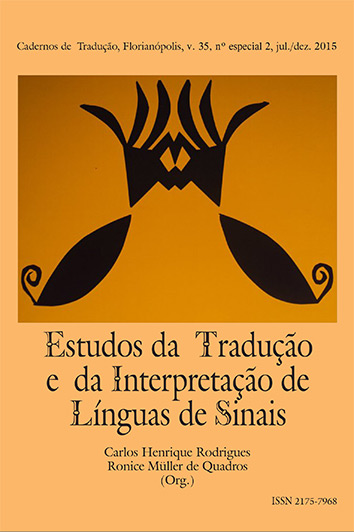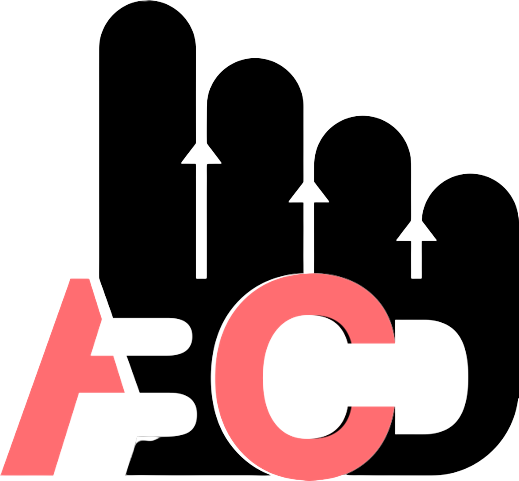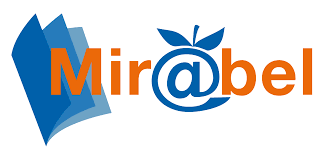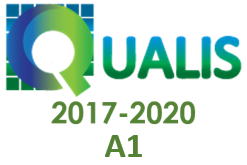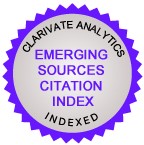Interpret teaching and teach interpreting: positions assumed in the interpretative act in mainstream contexts for deaf people
DOI:
https://doi.org/10.5007/2175-7968.2015v35nesp2p534Abstract
The goal of this article is to present some descriptions about the educational interpreter performance in the context of a mainstream school, more specifically in the 7th grade with four deaf students included, in which a bilingual project has being carried out. Relying on the assumption that inclusion forces interpreters to activate pedagogical practices during the interpretative act, this investigation payed attention to two phenomena: by one hand, the constructions of temporal spaces in the classroom that claim ties and partnerships between interpreters and teachers, beyond the technical interpretation itself. By the other hand, the configurations regarding interpretative decisions making emerged from pedagogical happenings. The data analysis indicates that there is a switch between the “interpreter-positon” and the “master-position”, being the last activated by the interpreter inner desire in creating ties and connections with deaf students in their learning process; and the former position, as an effect of the interpreter´s own challenges faced daily, in linguistic, cognitive, referential, and physical terms.References
AGAR, M. The professional stranger. New York: Academic Press, 1980.
BRASIL. Política Nacional de Educação Especial na Perspectiva da Educação Inclusiva. MEC/SEESP, 2008. Disponível em: http://portal.mec.gov.br/seesp/arquivos/pdf/politica.pdf>. Acesso em: abr. 2015.
CARVALHO, A. F. de. Foucault e a Função-educador. 2. ed. Ijuí: Editora Unijuí, 2014.
CARVALHO, A. F. de; e MARTINS, V. R. de O. Posição-mestre e função-educador: relações ativas no ato da interpretação da língua brasileira de sinais em contexto de ensino. Políticas Educativas, Porto Alegre, vol. 7(2), pp. 51-70, 2014.
ERICKSON, F. Qualitative methods in research on teaching. In M. C. Wittrock (Org.), Handbook of research on teaching, pp. 77-200. New York: MacMillan, 1986.
GESSER, A. Libras? Que língua é essa? Crenças e preconceitos em torno da língua de sinais e da realidade surda. São Paulo: Parábola Editorial, 2009.
GESSER, A. Tradução e Interpretação da Libras II. Material didático desenvolvido para o curso Letras Libras na modalidade a distância. UFSC, 2011.
LACERDA, C. B. F. de. Intérprete de Libras: em atuação na educação infantil e no ensino fundamental. Porto Alegre: Mediação/FAPESP, 2009.
LACERDA, C. B. F. de. O intérprete de língua de sinais no contexto de uma sala de aula de alunos ouvintes: problematizando a questão. In: Lacerda, C. B. F. de e Góes, M. C. R. de (Orgs.). Surdez: processos educativos e subjetividade. São Paulo: Editora Lovise, 2000.
SANTOS, L. F., DINIZ, C. L. L. M., e LACERDA, C. B. F. de. Práticas de interpretação no espaço educacional: para além dos limites da sala de aula. In: Lacerda, C. B. F. de, Santos, L. F. e Martins, V. R. (Orgs.) Escola e diferença: caminhos para educação bilíngue de surdos. São Paulo: Fapeu. (no prelo).
MARTINS, V. R. de O. Posição-mestre: desdobramentos foucaultianos sobre a relação de ensino do intérprete de língua de sinais educacional. Tese (Doutorado em Educação) – Faculdade de Educação, Universidade Estadual de Campinas, Campinas/SP, 2013.
SOUZA, R. M. O professor intérprete de língua de sinais em sala de aula: ponto de partida para se repensar a relação ensino, sujeito e linguagem. ETD, vol. 8, 2007, pp. 154-170.
WINKIN, Y. A nova comunicação: da teoria ao trabalho de campo. Trad. Roberto Leal Ferreira. Campinas, SP: Papirus, 1998.
Downloads
Published
How to Cite
Issue
Section
License
Copyright Notice
Authors hold the copyright and grant the journal the right for their articles' first publication, being their works simultaneously licensed under the Creative Commons Attribution License (CC BY), which allows the sharing of such works with its authorship acknowledged and its initial publication in this journal.
Authors are allowed to enter into separate additional contractual arrangements for the non-exclusive distribution of the journal's published version of the work (e.g., post it to an institutional repository or as a book chapter, with an acknowledgment of its initial publication in this journal).

